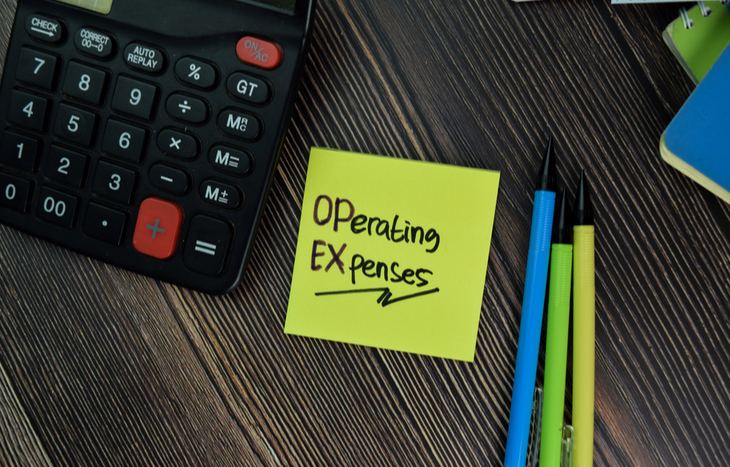What is an Operating Expense?
Running a business is about more than selling goods or services. Business operations depend on a host of support—from the facilities the business occupies to the employees who keep it running. These operational aspects incur costs, aptly named operational expenses—or OPEX for short. Operating expenses are ongoing costs associated with the cost of running and maintaining a business or organization. Some additional examples of this include rent, insurance and property taxes. Without these expenditures, the business wouldn’t be able to run.
Every company has operating expenses—some more than others. So long as these expenses contribute to the success of the business and don’t work against it, they’re essential. If operating expenses put a damper on profitability or impede the business’ ability to grow, it might be time to reassess them. Here’s a look at operating expenses and what they mean for a business.

Types of Operating Expenses
Operating expenses appear on a company’s income statement. They’re often widely defined; however, they satisfy the requirement of being essential to business operations. Some of the most common types of operating expenses include:
- Accounting and legal fees
- Interest paid, fees and charges
- Non Capitalized R&D
- Repair and maintenance
- Salaries and employee bonuses
- Sales and marketing expenses
- Travel and entertainment costs
- Utilities expenses
Every company will incur these operating expenses in some capacity. It’s the duty of executive leadership to strike a balance between keeping these costs low while enabling the company to operate from a growth-minded standpoint. It’s a tough balance to strike!
Operating Expenses vs. Non-Operating Expenses
If operating expenses are those critical to a business’ ability to run, non-operating expenses are those incurred outside of critical business ops. These can include the cost of disposal for depreciated assets, as well as the cost of borrowing capital.
Non-operating expenses can also include one-time costs. For example, if a company writes down inventory during a fiscal reporting period, it’s a non-operating expense. This is also true of something like restructuring costs, which can include hefty expenditures outside of the normal operations of the business.
Operating Expenses vs. Capital Expenditures
OPEX and CAPEX are easy to confuse due to their abbreviations. The latter, capital expenditures, show up on the company’s income statement as one-time purchases that lend themselves to future business operations. They’re investments.
The biggest difference between OPEX and CAPEX is in how they’re accounted for over time. Companies can write off operating costs in the year they occur, whereas capital expenditures are expensed over time for tax purposes. The two often go hand-in-hand. For example, ABC Company may purchase a piece of equipment to produce Widgets (CAPEX). Once up and running, that machine will need repair and maintenance (OPEX) to continue producing saleable goods that contribute to the company’s revenue.
Operating Expenses vs. Cost of Goods Sold
There’s an important difference between operating expenses and cost of goods sold (COGS). While COGS fluctuate up or down depending on sales, operating expenses are consistent and ever-present.
Cost of Goods Sold Example
If ABC Company sells 100 Widgets, it needs to pay for the materials to produce those Widgets. However, if it sells more than 100 Widgets, its COGS will go up to pay for any additional units it makes. If it sells fewer than 100 Widgets, COGS will decrease since there are fewer to produce.
Operating Expense Example
ABC Company has five Widget machines. These machines need routine service every two weeks to maintain their efficiency. The cost of this maintenance equates to ten man hours total (two per machine). The cost of these man hours equates to $50/hr, for a total of $500 every two weeks, or $1,000 per month.
Operating expenses and COGS are both important metrics to consider when evaluating a company, but for different reasons. Operating costs tend to factor more heavily into net metrics such as net margin and net profit, while COGS play an important role in gross metrics like gross revenue.
Turning Inventory into Throughput
The overarching philosophy of operating expenses is to leverage the cost of doing business into revenue-generating results. This is sometimes referred to as turning inventory into throughput. For example, it costs money to lease facilities and buy equipment, but in doing so, a company is able to turn materials (inventory) into saleable products (throughput). From this standpoint, operating expenses are a facilitating mechanism—without them, there would be no way to bridge the gap between inventory and profit.
There’s also the Theory of Constraints, which implies that companies need to optimize operational costs, instead of merely trying to cut them. The idea is that “a chain is no stronger than its weakest link.” Weakening one area of operations by over-cutting costs can disrupt the business’ ability to grow. Instead, seeing operating expenses as investments allows companies to focus on maximizing ROI. It all comes back to balancing the cost of doing business with the results that business yields.
The Cost of Doing Business
Operating expenses are, simply, the cost of doing business. Without facilities, staff, sales and marketing, and the like, businesses wouldn’t be able to produce saleable goods or services. These auxiliary costs become the foundation for running a business—and its benchmark for profitability. Moreover, it’s a great way for investors to analyze this data and recognize trends. To learn more, sign up for the Profit Trends e-letter below!
Good companies strive to keep these expenses as low as possible (without impeding healthy operations), to lower the floor for profitability. In doing so, they stay lean and efficient, and let their balance sheet attract investors as they grow larger and larger.





